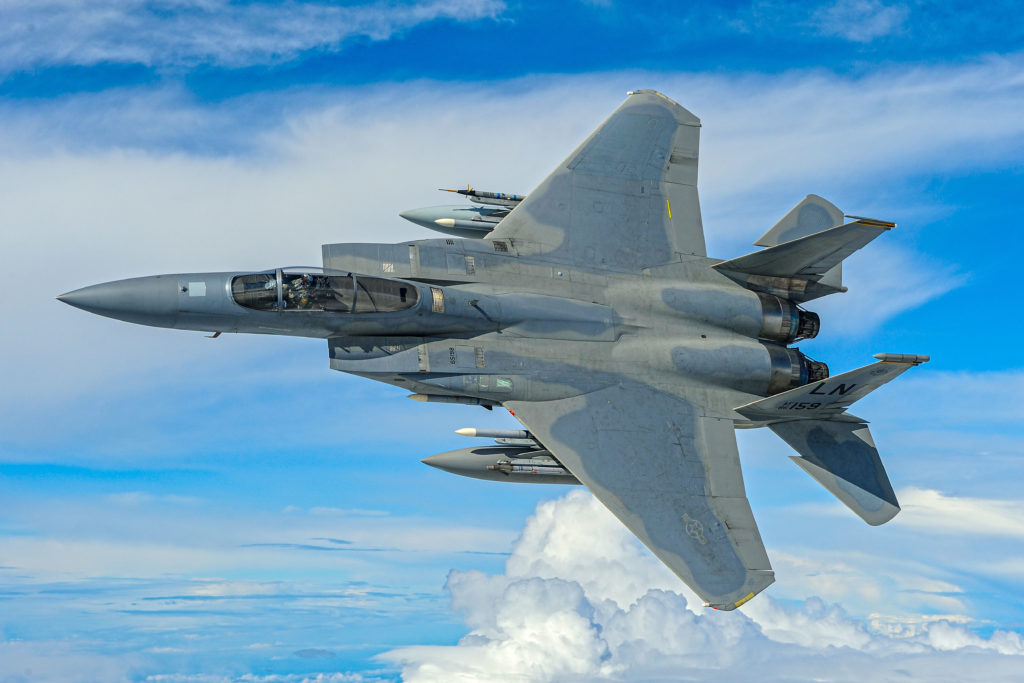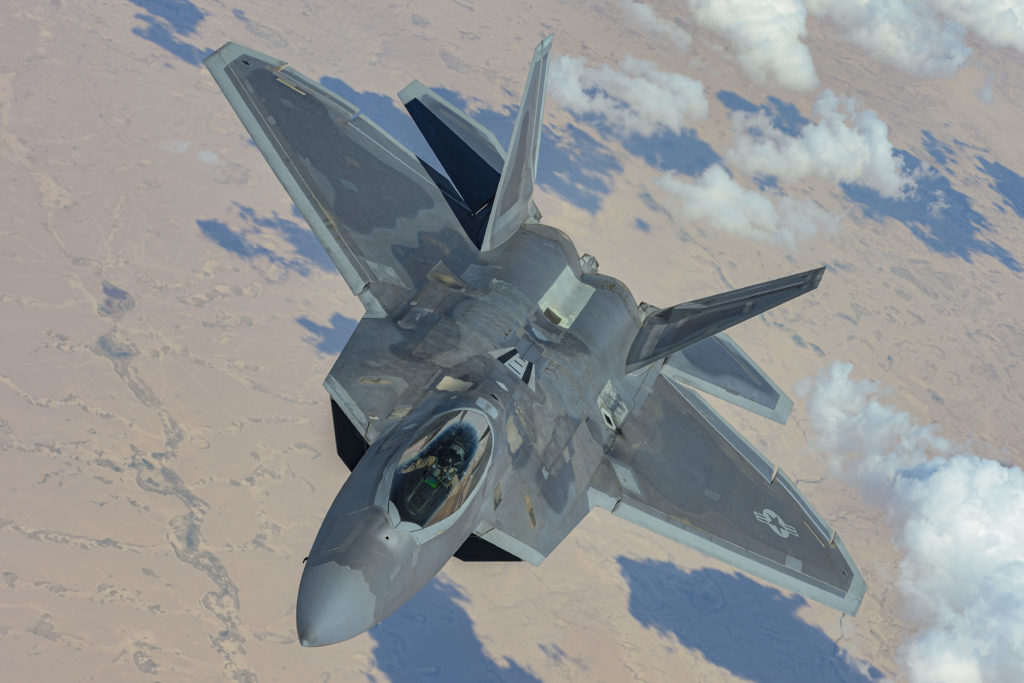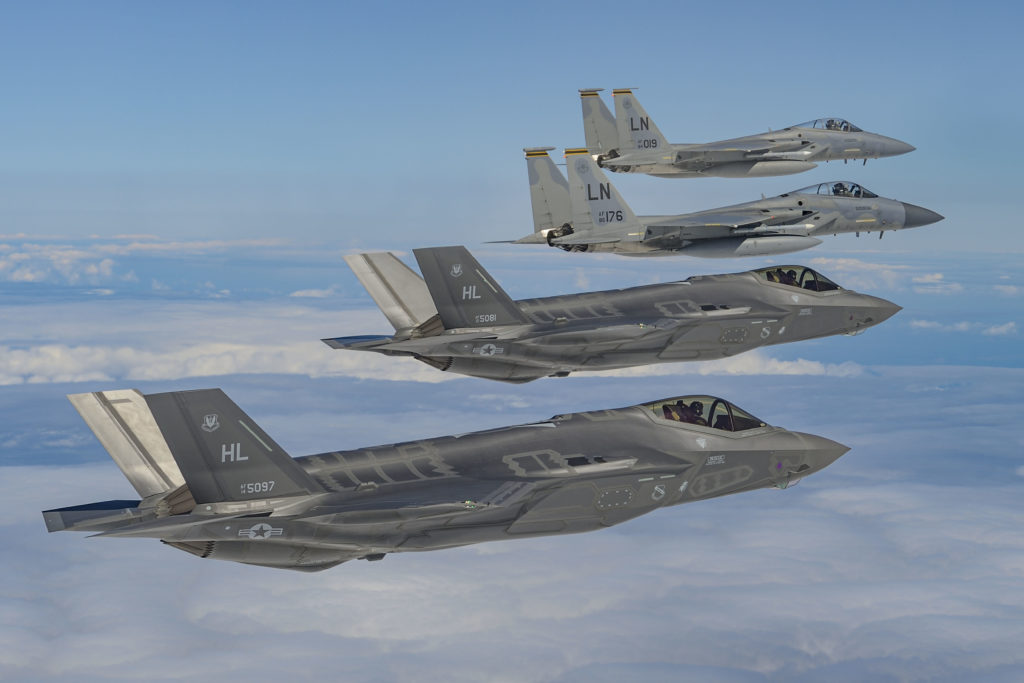Estimated reading time 9 minutes, 29 seconds.
The U.S. Air Force (USAF) is completing a Tactical Aircraft (TacAir) study that will inform its fiscal year 2023 budget request and cement a 15-year plan to rationalize the service’s fighter inventory down to a ‘four-plus-one’ fleet. The Next-Generation Air Dominance (NGAD) fighter will replace the F-22 as the centerpiece of USAF air superiority, able to operate anywhere at any time. It will be supplemented by the Lockheed Martin F-35A, the new Boeing F-15EX, and upgraded F-16C/Ds. The “plus one” is the A-10 Thunderbolt II, which, although unpopular with USAF leaders, is acknowledged as being the best tool for “low intensity” conflicts — evidenced in recent years in the skies over Syria where the A-10 combined effectively with the unmanned MQ-9 Reaper to provide persistent armed overwatch.

Previous strategic USAF plans called for fighter modernization to include only stealthy, fifth-generation assets. However, that thinking has changed, and the USAF is approaching its future warfighting needs with a desire for a blended fleet with complementary capabilities — high-end stealthy fighters, F-15s that can quickly integrate large weapons, and platforms that provide the necessary affordable mass to meet an exhausting schedule of homeland and global tasks. USAF chief of staff Gen Charles “CQ” Brown recognizes a need for “a mix for the lower-end fight,” along with advanced fifth-generation jets.
Senior officers say the average age of the USAF’s current fighter inventory is 29 years. Some 44 percent of USAF fighters are currently flying beyond their initial service life. Types such as the F-15C should have been retired years ago. Maintenance costs have shot up at twice the rate of inflation, and rationalization of disparate fleets is essential to help bring costs down and keep volumes up. Overhauling one of the world’s largest fleets of fighter aircraft is both complex and costly. For the USAF, fighter jets represent the tip of the spear, but a thorny issue.
Most notably, the F-22 Raptor is not in the USAF’s long-term plan. When Secretary of Defense Robert Gates culled the F-22 Raptor in 2008, he argued that the Raptor was no longer relevant and that just 187 of these advanced fighters was all the USAF needed. It is now acknowledged that the USAF needed far more Raptors, and that Gates’ decision caused a huge knock-on effect that is still being felt today. Moreover, the USAF has not received F-35s at anything like the rate it needs to recapitalize effectively.

The F-22 is monstrously expensive to maintain, and while the small Raptor force is slated for retirement, it will bridge the gap to NGAD with a package of upgrades that will keep it relevant until its successor comes online. In November 2021, the USAF awarded Lockheed Martin a $10.9 billion contract for the Advanced Raptor Enhancement and Sustainment (ARES) program to cover sustainment and modernization over the next decade.
NGAD itself is being designed as a system of systems, with a flying demonstrator already said to be secretly in action. The craft and associated systems are planned to be fielded over the next 10 to 12 years. NGAD is designed to be able to operate over long ranges and meet the array of threats found in the Pacific theater.
The USAF’s headline target is to procure 1,763 F-35As under its program of record, however, there are increasing signs that the actual number will be trimmed — possibly as low as 1,050 aircraft as mooted by planning under the Air Force Warfighting Integration Capability (AFWIC). While initial procurement costs have been reduced towards the $80 million target, operation and support costs of the F-35 remain high. Former assistant secretary of the Air Force for Acquisition, Technology and Logistics, Dr. Will Roper, told reporters on Jan. 14, 2021: “I think it’s a long way from being an affordable fighter that we can buy in bulk.” There have also been calls from Gen Brown to not use “high-end” fighter aircraft for the low-end fight.

Development of the F-35 has been slower than the USAF expected, and by now the USAF should have 700 to 1,000 F-35s on the ramp. Instead, it has around 340. One senior official recently said the F-35 is considered to be perfect for the European theater. This could be related to the first F-35As for the U.S. Air Forces in Europe being scheduled to arrive at RAF Lakenheath to join the 48th Fighter Wing before the end of this year. While these jets are replacing F-15Cs, the USAF’s decision to procure the Boeing F-15EX is seen as the most expeditious and cost-effective way to replace the F-15C.
The USAF could buy as many as 144 F-15EX Eagles under an indefinite-delivery/indefinite-quantity (IDIQ) contract worth up to $22.89 billion, with the first 80 jets planned over the next five years. The USAF sees the F-15EX as being complementary to the F-35, being a “weapons truck” that is able to integrate new weapons quickly.
Notably, the F-15E is not in the “four-plus-one” plan, suggesting the Strike Eagle, too, could be retired once the last F-15Cs have been recapitalized with F-15EXs. An overall fleet of EXs would make an ideal single fleet replacement for both Eagles and Strike Eagles, suggesting that the initial 144-aircraft buy could well be topped up to allow for the relatively small F-15E fleet to be replaced.
The final part of the plan relates to the F-16, which offers the USAF affordable capacity. One senior officer recently commented that the F-16 is around half the price of the F-35 to operate. The USAF is currently upgrading its “post-Block” F-16s — aircraft of Block 40/42/50/52. With plenty of service life remaining, replacing these jets won’t come any time soon. However, the USAF is already evaluating its options. Two have been publicly voiced, either more F-35s (if the fighters’ through life cost is reduced), or via a new clean sheet fighter.

The USAF is taking one of its most decisive stances on fighter modernization in a decade. The staged process will herald advanced capabilities to concentrate on the most complex battle space, with supporting fleets that can absorb low intensity operations for the foreseeable future. Many eyes will be on that high-end fight, how NGAD will look, and what exotic technologies it will field. As well, how many the Air Force will be able to afford, and how it will ensure NGAD is an aircraft it can operate without busting the budgets.









just outstanding … !
Wow. Some really poor decisions made long ago are really hurting the USAF now. It is bewildering to see how the USAF and the successive administrations stepped into so many piles of s–t. Of course, hindsight shows us the mistakes.
Limiting the production of F-22s seems to be one of those piles. At the time they were discussing those options, nobody was forecasting the unbelievable growth of China’s military. I would be interested to know what was the original number of F-22 to be ordered.
OK. I checked wikipedia and they report: “The USAF originally envisioned ordering 750 ATFs at a total program cost of $44.3 billion and procurement cost of $26.2 billion in FY 1985 dollars, with production beginning in 1994. The 1990 Major Aircraft Review led by Secretary of Defense Dick Cheney reduced this to 648 aircraft beginning in 1996. By 1997, funding instability had further cut the total to 339, which was again reduced to 277 by 2003.[26] In 2004, the Department of Defense (DoD) further reduced this to 183 operational aircraft, despite the USAF’s preference for 381.[27][28] A multi-year procurement plan was implemented in 2006 to save $15 billion, with total program cost projected to be $62 billion for 183 F-22s distributed to seven combat squadrons.[29] In 2008, Congress passed a defense spending bill that raised the total orders for production aircraft to 187.[30][31]” No doubt, this leading edge system was another case of cost overruns and blown schedules leading to hard decisions. A messy pile for sure.
I guess we can’t really blame Secretary of Defense Robert Gates for culling the F-22 Raptor in 2008 afterall. Again according to wikipedia, Robert Gates “served as the 22nd United States secretary of defense from 2006 to 2011”. The first wikipedia excerpt above clearly indicates that plans to chop the F-22 production were well in hand long before Gates came to the party. Is it right to single him out in this article?
After all the pain of bringing the F-22 into service, how is it that the armed forces of the DSA (Divided States of America) and administrations convinced themselves they could bring in the F-35 on a given budget and schedule? For all the new systems, materials, technologies and engineering intended for the F-35, who would swallow that story? Has there ever been a leading edge piece of military kit brought in on time, living up to the promises from the military industrial complex and on budget? And this doesn’t take into account the tremendous cost per flight hour. A nice smelly pile. By the way, I hope Canada avoids this smelly one.
Going forward, what new piles will be presented for stepping into? Enter the Next-Generation Air Dominance (NGAD) fighter. While the jet jockeys and bean counters fight their way through this over-priced bundle of poo, China will be stealing and inventing its own 6th Gen system. They probably won’t have so many bells and whistles on their version. Or maybe they will, and they do seem to be on the cusp of getting their engine technology in order. Meanwhile the good ole DSA will have to go into much more deficit spending to bring the next pile into service. More debt supported in part by China. What a confusing world we live in.
Whatever happens, the administrations in the DSA need to shake off the bottom of their boots and be more realistic about how to bring new programs on line. I’m sure the people that point out all these piles of poo, the Government Accountability Office (GAO), is getting tired of repeating itself decade after decade. Don’t the administrations ever learn from those reports? There is too much at stake for the DSA to keep on stepping in it.
Don’t forget to swipe your boots before coming in. Have a good day.